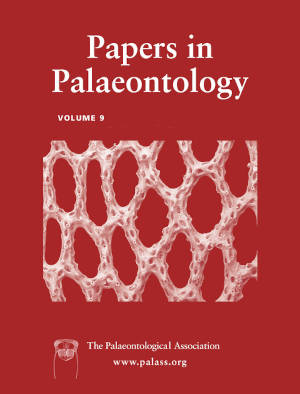Article: Astogenetic morphological variation in the bryozoan Prophyllodictya gracilis from the Middle Ordovician of Russia and inferred colony-wide feeding currents
Publication: Papers in Palaeontology
Volume:
9
Part:
3
Publication Date:
2023
Article number:
e1492
Author(s):
Marcus M. Key Jr, Patrick N. Wyse Jackson, Madelaine S. McDowell, and Merlynd K. Nestell
DOI:
10.1002/spp2.1492
Abstract
Abstract The discovery of a relatively large and complete ptilodictyid bryozoan colony enabled morphometric analysis of astogenetic change from the colony base to the periphery. This enabled us to test the hypothesis that the relative area of feeding and non-feeding zooids must be relatively constant across astogenetic growth in this colony. The colony is a stenolaemate cryptostome belonging to the cribrate species Prophyllodictya gracilis (Eichwald). It was recovered from the Volkhov Formation (Dapingian Stage of the Middle Ordovician) from the Putilovo Quarry east of St Petersburg, Russia. The colony was digitally imaged so lacuna and branch dimensions could be measured relative to the colony base and colony edge. Branch thickness and width decreased from the colony base to the top of the colony. Lacuna area and the number of autozooecial rows per branch also decreased distally while the number of lacunae per area increased. As a result, there was an astogenetically stable ratio of autozooid-bearing skeletal branch area to the total lacuna area across the colony. This characteristic is interpreted as a requirement of colony-wide feeding currents in this cribrate cryptostome colony.
